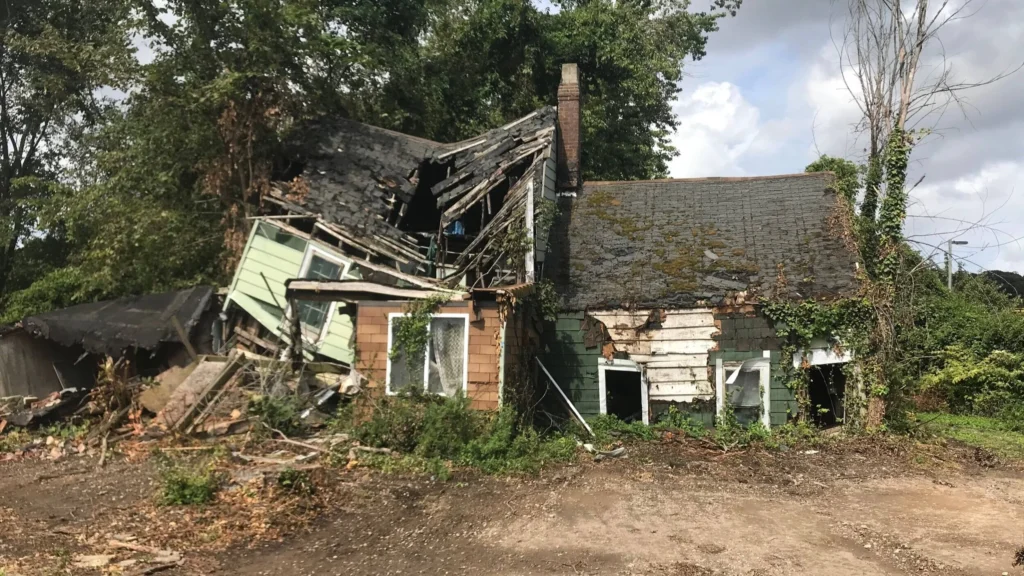Peter Crippen House: Preservation Update and Vision for the Future by Preservation Long Island, New York

Residents at 1465 East Main Street shared what they called “horror stories” about the effects of water damage in the complex.
The summer of 2021, Genevieve, an undergraduate student at Cornell University, worked closely with the Preservation Director, Tara Cubie, to update the existing Endangered Historic Places list and contributed to the development of the new list, which will be released in early December. In this blog post, she explores the story of the Peter Crippen House, a site added to the Endangered Historic Places list in 2021, and highlights its ongoing significance within the region’s preservation landscape.
The Peter Crippen House does not quietly decay. It leans, it splinters, it collapses in slow motion a stark and unflinching reminder of what is lost when history is left untended. Once a modest but vital center of community life in Halesite, New York, this mid-19th century dwelling now stands in ruin, its roofline folded in on itself and clapboards weathered to bare wood. Even in this state, the house commands attention. It is the kind of building that draws you to a halt not for grandeur, but for the unmistakable sense that here, something important happened.
Peter Crippen was a free Black man navigating an America still entangled in the legacies of enslavement. Born in the early nineteenth century, he came of age in a state that had legally abolished slavery but preserved the architecture of inequality. In Halesite, a maritime hamlet of shipbuilding and oystering, Crippen secured his place as both property owner and civic leader. He helped to found the Bethel AME Church in Huntington, which would become not only a sanctuary of worship but a citadel of activism for the region’s Black residents. To read more go to the link below:
Decolonized: Places are Primary Sources Too: Part Two

